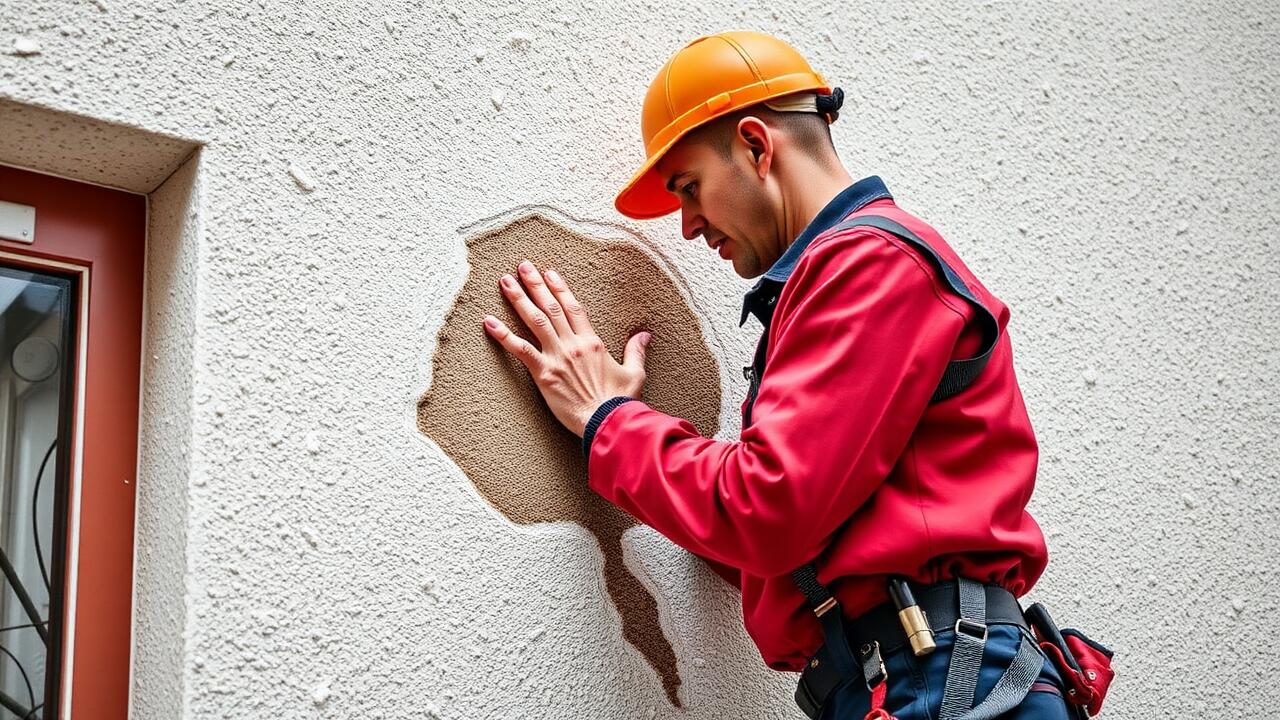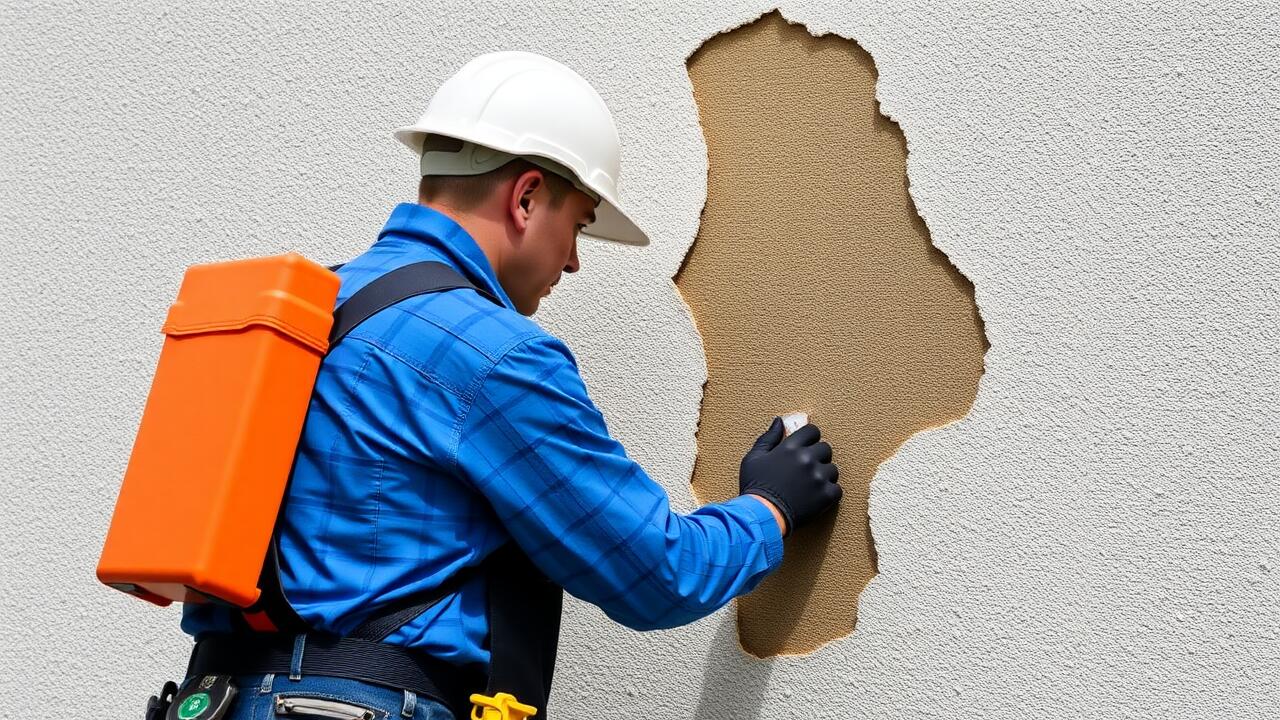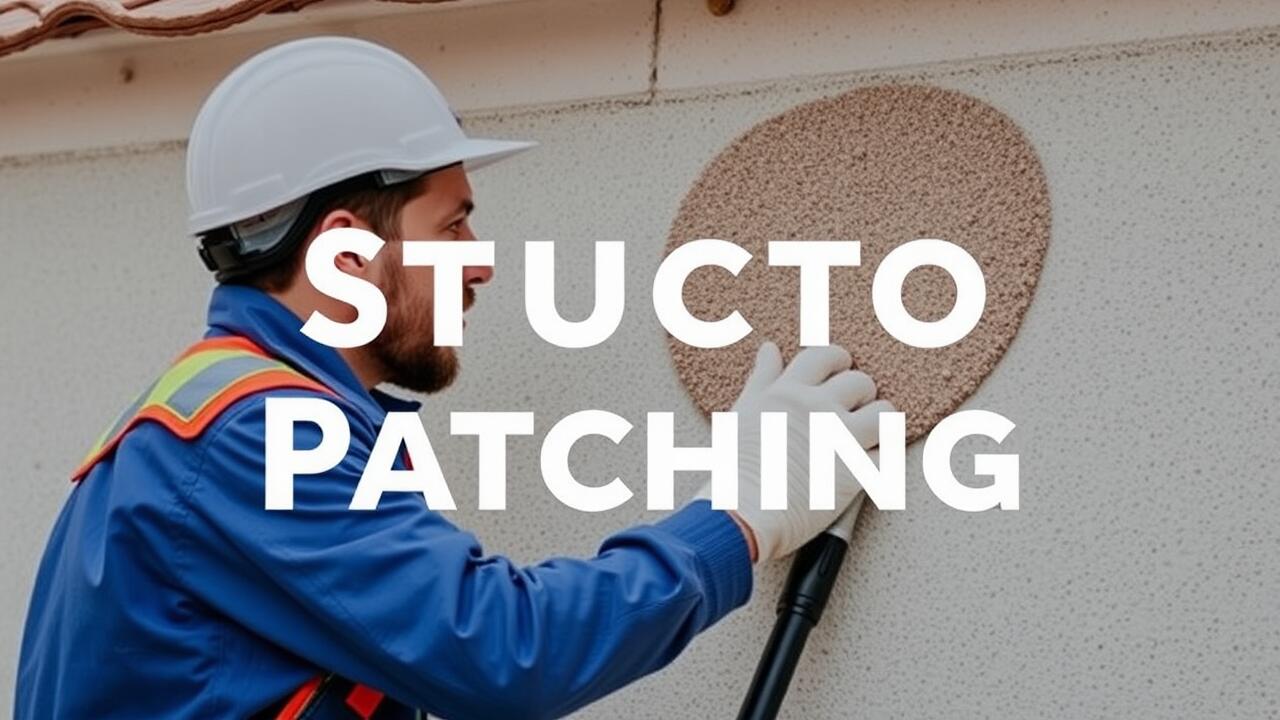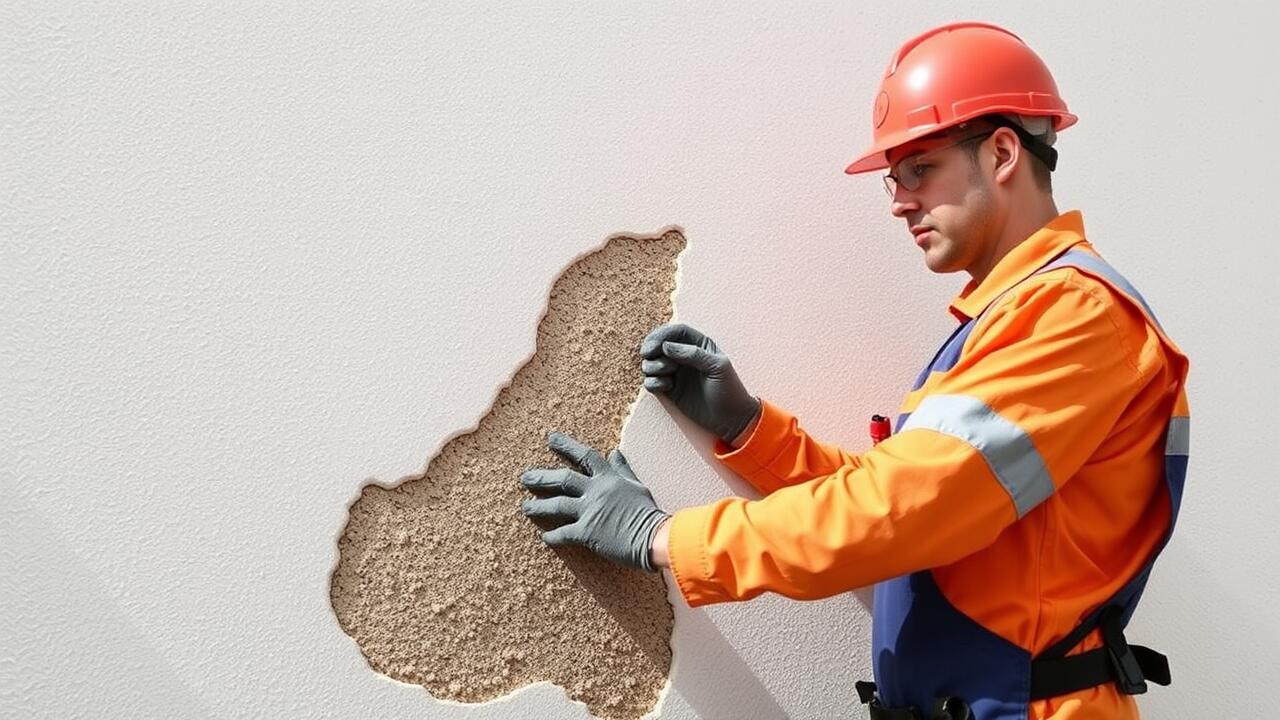
The Impact of High Winds on Stucco
High winds can exert significant pressure on exterior materials, and stucco is no exception. Its rigid composition may resist minor gusts, but strong, sustained winds can lead to cracks and displacement. Homes in areas prone to storms are particularly vulnerable, making it vital for homeowners to regularly inspect their stucco exteriors after severe weather events.
When examining stucco for wind damage, look for visible cracks, especially around joints and seams. Small openings may not seem severe but can allow moisture penetration, leading to more extensive issues over time. If homeowners notice damage, seeking professional assistance or services for "Stucco Patching near me" can ensure that repairs are done effectively and prevent further deterioration of the stucco exterior.
Assessing Wind-Related Damage
Following a storm, it’s crucial to assess any wind-related damage to stucco surfaces. Wind can cause cracks, chips, or even larger sections of stucco to become dislodged. Closer examination is essential, particularly around corners and joints where stress concentrations are more likely to occur. Look for signs of moisture penetration or deformation, which could indicate more significant underlying issues if not addressed promptly.
If damage is evident, it’s advisable to search for "Stucco Patching near me" to find local professionals or DIY solutions that can restore the integrity of your home’s exterior. Minor damage may allow for simple patching, while more extensive issues may require skilled repair. Timely assessment and repair can prevent further deterioration and help maintain the aesthetic appeal and protective qualities of the stucco.
Analyzing Impact from Hail and Debris
Hail can cause significant damage to stucco surfaces, creating dents, cracks, or even removing small sections of the material. When the hailstones strike with force, they can compromise the integrity of the stucco, allowing moisture to seep beneath the surface. This moisture buildup can lead to further deterioration, making it essential to assess any visible damage promptly. In addition to hail, debris carried by strong winds can also impact stucco exteriors, causing scratches or more severe breaks, especially if the debris is sharp or heavy.
After a storm, homeowners should take a close look at their stucco to identify any areas needing attention. The presence of small pockmarks or fissures may indicate hail damage, while visible signs of impact from flying debris should not be overlooked. For those seeking localized assistance, searching for "Stucco Patching near me" can connect them with professionals who specialize in repairing such storm-related damage. Proper assessment and timely repairs will help maintain the stucco's durability and protect the underlying structure of the home.
How Hail Can Compromise Stucco Integrity
Hail can inflict significant damage to stucco surfaces, affecting both aesthetics and integrity. When hail strikes, it may cause small dents and cracks, which can create openings for moisture infiltration. This moisture can lead to further deterioration over time, promoting mold growth and structural weakening. Even seemingly minor impacts can lead to long-term issues if not addressed promptly, necessitating vigilant inspection after severe weather events.
Identifying hail damage requires a careful assessment of the stucco's surface. Homeowners should look for surface irregularities, such as pitting and flaking, as these may indicate compromised stucco. If damage is found, timely repairs are essential to prevent worsening conditions. For those seeking assistance, searching for “Stucco Patching near me” can connect individuals with local professionals who specialize in restoring the integrity of stucco surfaces affected by hail.
Repairing Minor Stucco Damage
When tackling minor stucco damage, the first step is to gather the necessary materials. This includes stucco patching compound, a trowel, and a wire brush. Begin by cleaning the damaged area to remove any loose debris or paint. For optimal adhesion, ensure the surface is slightly damp before applying the patching compound. Following the manufacturer's instructions, mix the compound until it reaches a smooth consistency.
Once the mixture is ready, use the trowel to apply the patching compound evenly over the damaged area. Feather the edges to blend it with the surrounding stucco, ensuring a seamless repair. After the compound has dried completely, it is essential to paint the patched area to match the existing stucco. For those seeking professional assistance, searching for "Stucco Patching near me" can yield reliable local options for repairs.
Step-by-Step Guide to DIY Repairs
When tackling minor stucco damage after a storm, the first step involves gathering the necessary materials. Prior to beginning the repair, collect a stucco patch mix, a trowel, a sponge, and a paintbrush. Ensure that the area is clean and free of loose debris. If you notice any cracks, use a chisel or screwdriver to widen them slightly. This allows the patch to adhere better to the surrounding stucco. Once prepared, mix the patch according to the manufacturer’s instructions and apply it into the damaged area using the trowel. Smooth the surface to match the existing texture.
After allowing the patch to dry according to the product label, inspect the repair. If the texture seems uneven, use the sponge to lightly dab the surface, creating a more seamless finish. Once satisfied with the smoothness, you can paint over the patch to match the surrounding wall. For those unfamiliar with this process or looking for more assistance, searching for "Stucco Patching near me" can yield local professionals who specialize in stucco repairs. This can be a valuable option if the damage proves to be more extensive than initially thought.
FAQS
What are the common signs of stucco damage after a storm?
Common signs of stucco damage include cracks, chips, holes, and discoloration. You may also notice areas where the stucco has pulled away from the underlying structure.
How can I assess wind-related damage to my stucco?
To assess wind-related damage, inspect your stucco for visible cracks or loose sections. Check for signs of delamination, where the stucco may have separated from the wall, and look for debris that may have impacted the surface.
What should I do if I find hail damage on my stucco?
If you find hail damage, document the damage with photos and notes. Minor dents or pockmarks can sometimes be repaired with a patching compound, but significant damage may require professional assessment and repair.
Can I repair minor stucco damage myself?
Yes, minor stucco damage can often be repaired through DIY methods. You can follow a step-by-step guide that includes cleaning the area, applying a patching compound, and finishing with paint or texture to match the surrounding surface.
When should I consider hiring a professional for stucco repairs?
Consider hiring a professional if the damage is extensive, if there is risk of underlying structural issues, or if you are not comfortable performing the repairs yourself. A professional can ensure that repairs are done correctly and safely.



